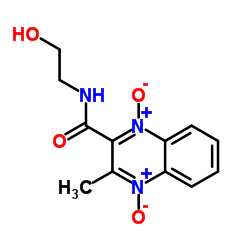Pharmacokinetic and residue studies of quinolone compounds and olaquindox in poultry.
A Anadón, M R Martinez-Larrañaga, M J Diaz, C Velez, P Bringas
文献索引:Ann. Rech. Vet. 21 Suppl 1 , 137S-144S, (1990)
全文:HTML全文
摘要
Nalidixic acid and similar antimicrobial agents have been available for more than 20 years, mainly for treating infections caused by Gram-negative enterobacteria. Recently, several chemically related drugs, including oxolinic acid, pipemidic acid, piromidic acid and flumequine, have been developed. They are either naphthyridine-carboxylic acid or quinoline-carboxylic acid derivatives and, with nalidixic acid, are so-called quinolones. A major advance in antimicrobial chemotherapy was the synthesis of newer quinolones containing at least 1 fluorine atom and a piperazinyl group. These new fluoroquinolones have an extended antimicrobial spectrum compared to the first quinolone generation, and are highly active against most Gram-negative pathogens including the Enterobacteriaceae and Pseudomonas aeruginosa. The pharmacokinetic properties and residue levels of these quinolones and fluoroquinolones for which clinical experience or experimental information exists in poultry are reviewed here. On the other hand, administration of the quinoxaline-di-N-oxide, olaquindox, for medical purposes raises questions concerning the pharmacokinetic disposition of the drug and the risk of its residues in poultry. This paper presents information about the pharmacokinetic profile of olaquindox and the presence of its residues in chickens.
相关化合物
| 结构式 | 名称/CAS号 | 分子式 | 全部文献 |
|---|---|---|---|
 |
喹乙醇; 喹酰胺醇
CAS:23696-28-8 |
C12H13N3O4 |
|
First detection of oqxAB in Salmonella spp. isolated from fo...
2013-01-01 [Antimicrob. Agents Chemother. 57(1) , 658-60, (2013)] |
|
Reduction of carbadox mediated by reaction of Mn(III) with o...
2013-02-05 [Environ. Sci. Technol. 47(3) , 1357-64, (2013)] |
|
Residue depletion and tissue-plasma correlation of methyl-3-...
2010-01-27 [J. Agric. Food Chem. 58(2) , 937-42, (2010)] |
|
Development of a biomimetic enzyme-linked immunosorbent assa...
2013-01-01 [J. Immunoassay Immunochem. 34(1) , 16-29, (2013)] |
|
Metabolism of olaquindox in rat and identification of metabo...
2011-04-15 [Rapid Commun. Mass Spectrom. 25(7) , 889-98, (2011)] |